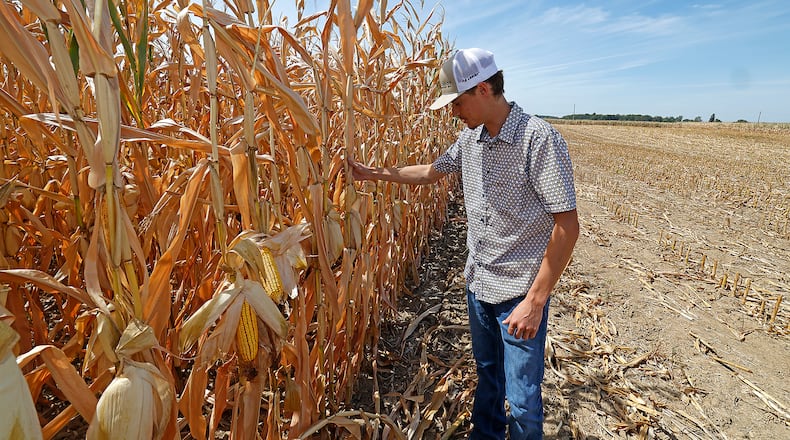“We’re asking people to think about themselves, but also think about their neighbors, their community, the rest of our state,” Reardon told this news outlet. “These are the worst drought conditions the state’s had in 22 years, so that right off the bat indicates to me (that) this is pretty serious.”
The ban affects activities including lighting a fire of any type, campfires, bonfires, smoking (including cigarettes or similar devices), non-electric cooking regardless of fuel source, igniting any kind of fireworks. It also includes discarding lighted or smoldering material such as matches or cigarettes, flame-based displays or exhibitions such as sky lanterns and cold spark machines and using spark-causing devices for recreational purposes.
Acceptable open flame-related activities include indoor cooking and outdoor cooking methods such as electric stoves, propane, and non-flame-based heating or electrical devices.
“We can’t control the wind direction, we can’t control the wind speed, and we can’t control where any embers from that fire would go,” Reardon said. “We can’t control any of those things, so that’s why the drought has really heightened the awareness of those open-burning type activities, and the risk that they present.”
When it comes to the level of moisture in the soil, NOAA estimates the region is missing almost 30 inches of rainfall, Reardon said.
“That dryness goes far beyond just what grass you may have left,” he said. “People seem to think that ‘the grass is still green. We’re not in a drought.’ Well, that’s not necessarily true.”
Reardon emphasized that recent rainfall has not done enough to significantly alleviate the drought.
“We hear that a lot. People say, ‘It’s rained. Can I go ahead and have a bonfire?’ But the answer is ‘no,’” he said. “Our meteorologist and our hydrologist tell us that we need to have several days worth of continued constant rain to make up the deficit that we have in Ohio, creating the drought.”
The drought and subsequent burn ban have led to parts of some events being canceled. On Sept. 21 in Hamilton, event organizers of The Corn Stand Jam had to nix an evening fireworks show.
Jimmy Unger, co-director of the event, told this news outlet that city officials initially told him that having a water tank on hand would be enough of a precaution amid then-moderate drought conditions.
But when drought conditions turned severe, Unger was told the fireworks show could not go on.
“It took the wind out of our sails because that’s our grand finale,” Unger said. “We’re the last event every year at River’s Edge, and the fireworks are kind of the icing on the cake, the cherry on top, however you want to look at it.
Unger said he and his crew were upset by the need to cancel, but the reasoning was sound.
“We understood the ramifications of a drought and (things possibly) catching on fire,” he said. “We didn’t question that. We were just upset from (because of) all our planning. Can’t control Mother Nature, though.”
The drought hasn’t altered any event plans in Montgomery County’s Miami Twp., but the only change that community anticipates is having to start its leaf collection program earlier than planned, according to officials.
The township’s date to start that program had initially been set as Nov. 4, but leaves are already starting to fall and there are residents that are already raking their leaves to the curb. The township said it most likely will have to start removing some leaves before trick-or-treat night on Oct. 31.
“It’s a safety issue for the Halloween season,” said John Schweickart, Miami Twp.’s public works director. “With the drought conditions, the leaves are falling sooner than normal, and we don’t want piles of leaves at the curbs that could hinder children as they walk around for trick-or-treat.”
Dead leaves, dry grasses, shrubs and fallen pine needles can all cause wildfires, the fire marshal said.
“Most of the plant materials in Ohio that can fuel wildfires are currently dry and will stay this way until we have significant rainfall,” Reardon said.
It also includes crops dried out by summer’s scorching temperatures.
“Two weeks ago ... in Ross County, an electric line came off of a pole, and it was energized, fell into a cornfield, and 30 minutes later, 35 acres of the cornfield was burned,” Reardson said. “That’s how dry things are in some parts of the state.”
WHAT’S INCLUDED IN THE BURN BAN?
Examples of activities prohibited by the order in the ban area include those involving the lighting or maintaining of an open fire such as:
- Any open burning of trash, debris, waste, combustibles, leaf piles or similar vegetation
- Campfires and bonfires
- Throwing down or discarding lit or smoldering material, such as matches or cigarettes
- Using or discharging any type of fireworks
- Live-fire training events
- Flame effect(s) based displays or exhibitions, including sky lanterns and cold spark machines
- Using spark- or heat-producing devices for recreational purposes
SOURCE: Ohio State Fire Marshal’s Office
About the Author



